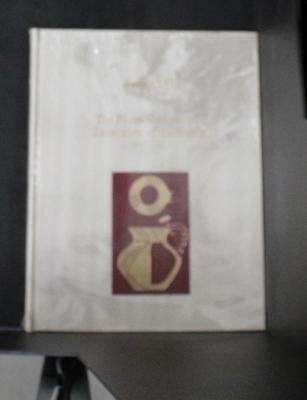
Pseira VII
The Pseira Cemetery 2. Excavation of the Tombs
Seiten
2003
INSTAP Academic Press (Verlag)
978-1-931534-05-5 (ISBN)
INSTAP Academic Press (Verlag)
978-1-931534-05-5 (ISBN)
The results of the cemetery excavations on the small island off the northeast coast of Crete are published in two volumes: Pseira VII presents the results from the excavation and cleaning of the 19 tombs that still exist at the Pseira cemetery.
Richard B. Seager excavated the Minoan cemetery at Pseira in 1907, but the work was never published. The Temple University excavations (1985-1994) under the direction of Philip P. Betancourt and Costis Davaras conducted an intensive surface survey of the cemetery area, cleaned and drew plans of all visible tombs, and excavated tombs that had not been previously excavated. The results of the cemetery excavations on the small island off the northeast coast of Crete are published in two volumes. Pseira VII presents the results from the excavation and cleaning of the 19 tombs that still exist at the Pseira cemetery. The cemetery is remarkable for the diversity of its tomb types. Burials were in cist graves built of vertical slabs (a class with Cycladic parallels), in small tombs constructed of fieldstones, in house tombs, and in jars. Burials were communal, as is usual in Minoan cemeteries. Artifacts included clay vases, stone vessels, obsidian, bronze tools, jewelry, and other objects.
Richard B. Seager excavated the Minoan cemetery at Pseira in 1907, but the work was never published. The Temple University excavations (1985-1994) under the direction of Philip P. Betancourt and Costis Davaras conducted an intensive surface survey of the cemetery area, cleaned and drew plans of all visible tombs, and excavated tombs that had not been previously excavated. The results of the cemetery excavations on the small island off the northeast coast of Crete are published in two volumes. Pseira VII presents the results from the excavation and cleaning of the 19 tombs that still exist at the Pseira cemetery. The cemetery is remarkable for the diversity of its tomb types. Burials were in cist graves built of vertical slabs (a class with Cycladic parallels), in small tombs constructed of fieldstones, in house tombs, and in jars. Burials were communal, as is usual in Minoan cemeteries. Artifacts included clay vases, stone vessels, obsidian, bronze tools, jewelry, and other objects.
Philip P Betancourt is the Laura H Carnell Professor of Art History and Archaeology, at Temple University, and the winner of the Archaeological Institute of America's 2003 Gold Medal for Distinguished Archaeological Achievement.Costis Davaras is Director of the Archaeological Institute of Crete. He is the author of several archaeological guides to Crete, including Guide to Cretan Antiquities.
| Erscheint lt. Verlag | 1.7.2003 |
|---|---|
| Reihe/Serie | Prehistory Monographs |
| Verlagsort | Philadelphia |
| Sprache | englisch |
| Gewicht | 1165 g |
| Themenwelt | Geisteswissenschaften ► Archäologie |
| Geschichte ► Allgemeine Geschichte ► Vor- und Frühgeschichte | |
| Geschichte ► Allgemeine Geschichte ► Altertum / Antike | |
| Medizin / Pharmazie ► Pflege ► Palliativpflege / Sterbebegleitung | |
| ISBN-10 | 1-931534-05-5 / 1931534055 |
| ISBN-13 | 978-1-931534-05-5 / 9781931534055 |
| Zustand | Neuware |
| Haben Sie eine Frage zum Produkt? |
Mehr entdecken
aus dem Bereich
aus dem Bereich
auf den Spuren der frühen Zivilisationen
Buch | Hardcover (2023)
C.H.Beck (Verlag)
20,00 €
Konzepte – Methoden – Theorien
Buch | Softcover (2024)
UTB (Verlag)
39,90 €
Was Pompeji über uns erzählt
Buch | Hardcover (2023)
Propyläen (Verlag)
32,00 €


